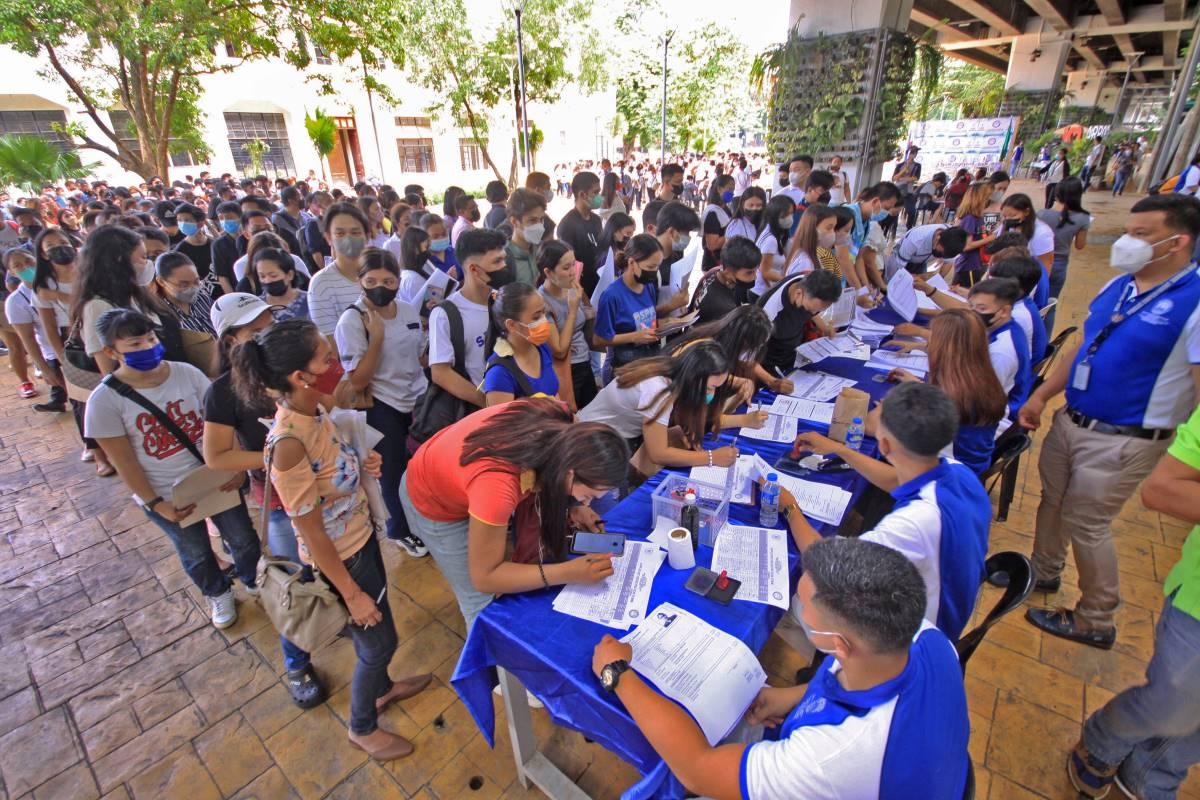Jobless Filipinos up in June; unemployment rate unchanged at 6%

The number of jobless Filipinos increased in June from the previous month but decreased from the same month last year, the Philippine Statistics Authority (PSA) reported Monday.
Preliminary data showed that there were 2.99 million unemployed Filipinos during the month, 62,000 higher than the 2.93 million in May, and 781,000 lower than the 3.77 million recorded in the same month last year.
The latest figure translated to an unemployment rate of 6.0%, unchanged from May, and lower than the 7.7% in June 2021.
Month-on-month, the biggest drops were seen in wholesale and retail trade which fell by 1.22 million to 9.72 million, followed by manufacturing which lost 101,000 to 3.65 million, and accommodation and food services which dropped 91,000 to 1.67 million.
These were followed by transportation and storage which lost 90,000 to 3.13 million, and financial and insurance activities down by 55,000 to 522,000.
This comes as the Labor Force — individuals with and without jobs aged 15 and above — increased to 49.58 million in June, equivalent to a labor force participation rate of 64.8%.
This compares with the 49.01 million in May with a rate of 64.0%, and the 48.85 million in June 2021 with a rate of 65.1%.
Employed Filipinos for the month stood at 46.59 million or 508,000 higher than the 46.08 million in May, and 1.52 million than the 45.08 million in June 2021.
The employment rate was also unchanged at 94.0% from May, but increased from 92.3% the same month last year.
Underemployed individuals — those who express the desire to have additional hours of work or to have a new job with more working hours — for the month fell to 5.89 million or an underemployment rate of 12.6%.
This is 780,000 lower than the 6.67 million underemployed Filipinos in May with an underemployment rate of 14.5%, and 522,000 lower than the 6.41 million in June 2021 with a rate of 14.2%.
The visible underemployment rate or the proportion of underemployed individuals working less than 40 hours in a week was estimated at 8.5% in June, down from 9.8% recorded in both May and June 2021.
“Talagang bumalik na ang sigla ng ating economy based on the numbers,” National Statistician Claire Dennis Mapa said at a briefing on Monday.
[The vitality of the economy has really returned based on the numbers.]
“We hope that the direction will continue, that it will go down, but we will see kung anong mangyayari sa [what will happen in the] month of July,” he added.
‘Improvement’
Mapa’s remarks were mirrored by Socioeconomic Planning Secretary Arsenio Balisacan, who said the figures indicated an improvement in the country.
“The latest data show a significant increase in the number of workers employed on a full-time basis,” he said in a separate emailed statement.
“While this is a good indication of the improving quality of work in our country, the government should incessantly boost its efforts towards providing an environment conducive to the creation of more and better employment opportunities,” he added.
Balisacan also expressed optimism that the reopening of the economy, along with the resumption of face-to-face classes, will boost domestic activities.
“In the near term, we will prioritize the immediate issues of rising inflation, the vulnerability of certain groups to shocks, and the pandemic-induced scarring to ensure that growth and employment gains are sustained,” he said.
Inflation surged to 6.4% in July, marking the highest in three years since October 2018’s 6.9%. This compares with the 6.1% in June, and 3.7% in July 2021.
President Ferdinand “Bongbong” Marcos Jr. earlier said the Department of Education — headed by Vice President Sara Duterte — is looking to start face-to-face classes in some schools by September, and full transition by November.
The economic cluster has long been pushing for face-to-face classes to resume, with studies by the National Economic and Development Authority (NEDA) showing that this would add P12 billion per week to the economy. — RSJ, GMA News




